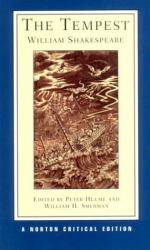|
This section contains 9,272 words (approx. 31 pages at 300 words per page) |

|
Jonathan Hart, University of Alberta
Since the Romantics the criticism of Shakespeare's The Tempest has been allegorical. Perhaps taking their cue from Coleridge, who said that the appeal of the play was to the imagination, subsequent critics appealed to the fantastic and to aesthetic allegories. Schlegel identified Ariel with air and Caliban with earth; Campbell saw The Tempest as the Shakespeare's fare-well to his art; Lowell equated Caliban with brute understanding, Ariel with fancy and Prospero with imagination. When I was an undergraduate the Romantic reading of this play as the playwright's fare-well to his art was still going strong. But for some time another kind of allegory was going on, that is the political allegory. Once a minority position, the political allegory has, in the last decade, overtaken the aesthetic allegory. My task is to find a version of The Tempest that acknowledges the political and aesthetic...
|
This section contains 9,272 words (approx. 31 pages at 300 words per page) |

|


